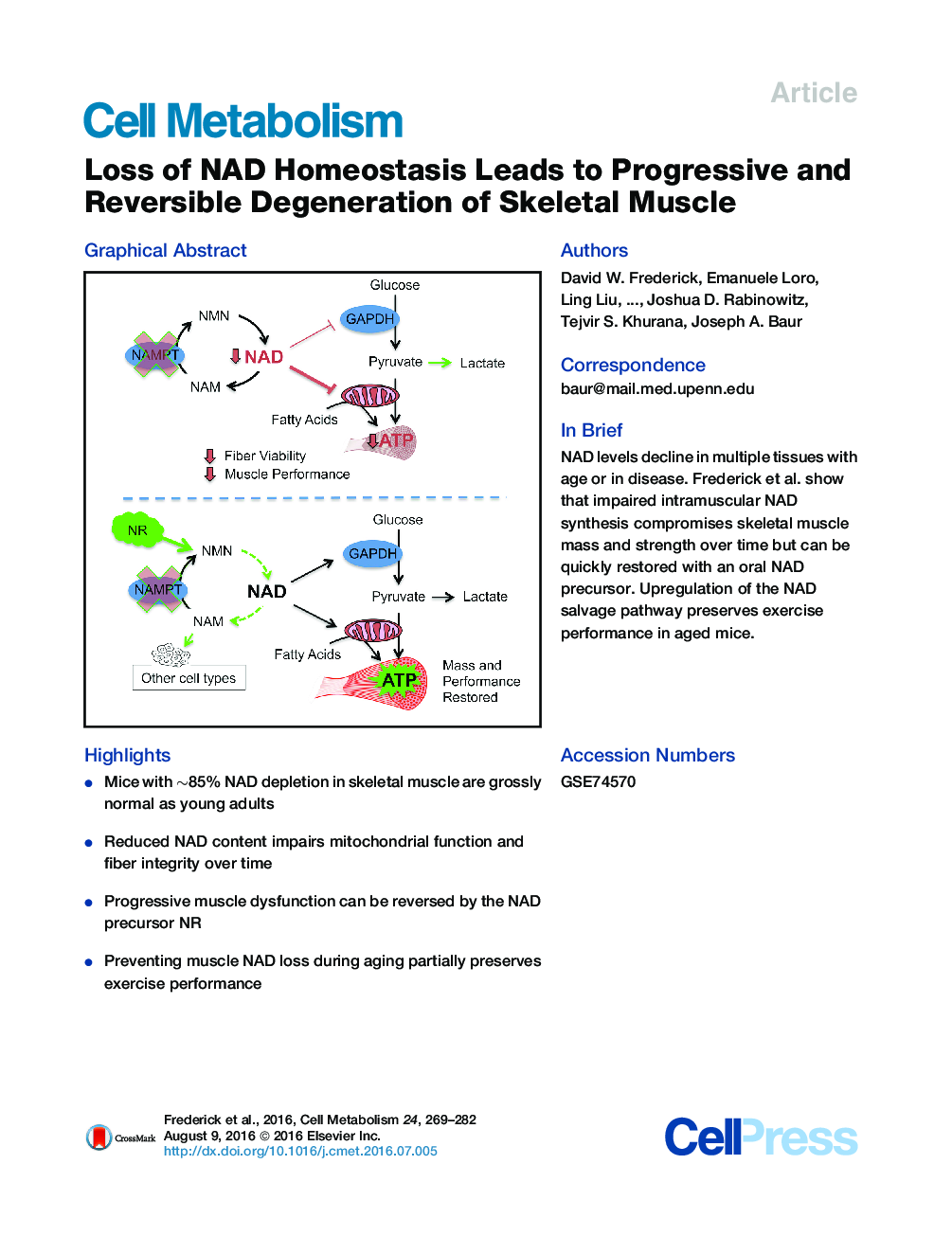| Article ID | Journal | Published Year | Pages | File Type |
|---|---|---|---|---|
| 2792411 | Cell Metabolism | 2016 | 14 Pages |
•Mice with ∼85% NAD depletion in skeletal muscle are grossly normal as young adults•Reduced NAD content impairs mitochondrial function and fiber integrity over time•Progressive muscle dysfunction can be reversed by the NAD precursor NR•Preventing muscle NAD loss during aging partially preserves exercise performance
SummaryNAD is an obligate co-factor for the catabolism of metabolic fuels in all cell types. However, the availability of NAD in several tissues can become limited during genotoxic stress and the course of natural aging. The point at which NAD restriction imposes functional limitations on tissue physiology remains unknown. We examined this question in murine skeletal muscle by specifically depleting Nampt, an essential enzyme in the NAD salvage pathway. Knockout mice exhibited a dramatic 85% decline in intramuscular NAD content, accompanied by fiber degeneration and progressive loss of both muscle strength and treadmill endurance. Administration of the NAD precursor nicotinamide riboside rapidly ameliorated functional deficits and restored muscle mass despite having only a modest effect on the intramuscular NAD pool. Additionally, lifelong overexpression of Nampt preserved muscle NAD levels and exercise capacity in aged mice, supporting a critical role for tissue-autonomous NAD homeostasis in maintaining muscle mass and function.
Graphical AbstractFigure optionsDownload full-size imageDownload high-quality image (178 K)Download as PowerPoint slide
